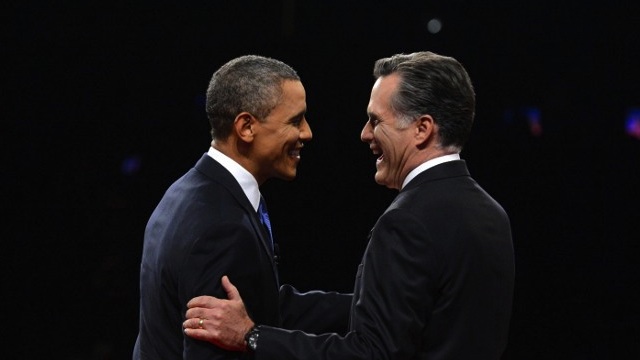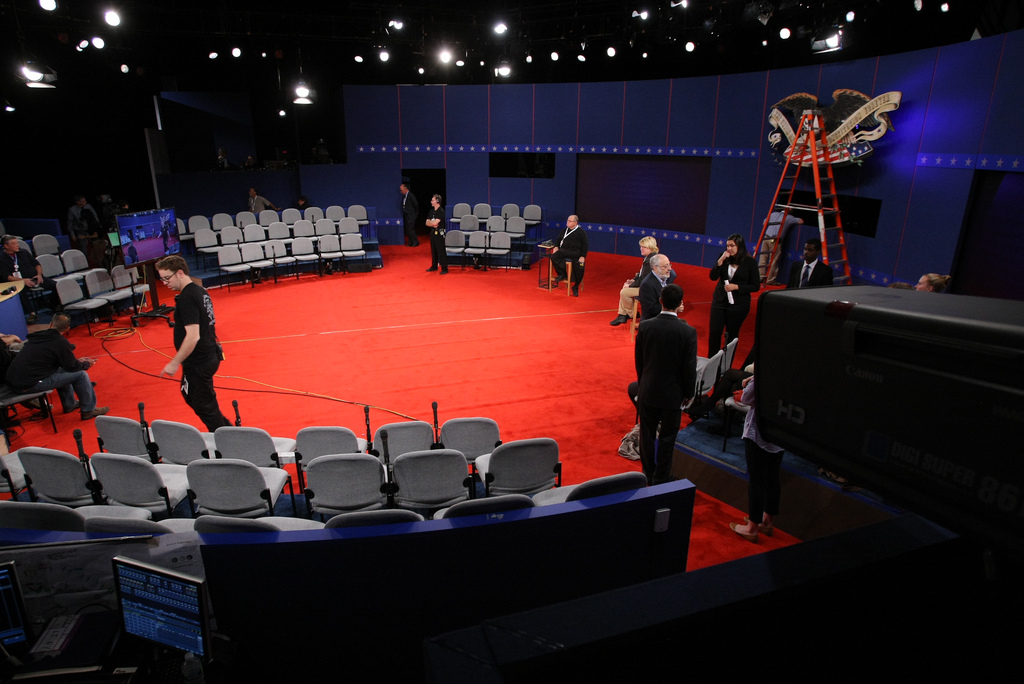SUMMARY
This is AI generated summarization, which may have errors. For context, always refer to the full article.

WILLIAMSBURG, Virginia, United States – Mitt Romney’s late charge has wiped out President Barack Obama’s polling lead and left the White House rivals in the tightest of races, raising the stakes of their second debate on Tuesday, October 16 (Wednesday, October 17 in Manila).
The Republican presidential challenger has built momentum since winning the pair’s first showdown and Obama’s electoral firewall — his grip on several key swing states — appears to have been weakened if not yet been breached.
Both the Democrat and the Republican were locked away on Monday in intense preparation for their clash at Hofstra University, New York, with Obama needing a comeback punch after a listless showing in their debut encounter.
New polls show Obama and Romney mostly matched within the margin-of-error, ahead of the November 6 election, with the Republican profiting from a dominant performance two weeks ago and foreign policy mis-steps by his opponent.
Obama’s team insists it still has multiple routes toward the magic number of 270 votes needed to win the White House in the state-by-state system known as the Electoral College.
But the momentum remains with Romney’s team and another Republican debate victory — or a strong Obama comeback — would further shift the underlying dynamics of the race.
On Monday, October 15, Obama compounded impressions that he his facing a knife-edge election, with a fundraising email reading: “This race is tied.”
But his spokeswoman Jen Psaki insisted that, although the campaign has believed all along that his re-election bid would be tight, the president still enjoys fundamental advantages.
“It is very, very close, there are some states where we are up by two points, there are some states where we are down two points,” she said, as Obama sequestered himself for a third day of debate practice.
In polls of the national popular vote, the race was also effectively tied but Obama’s approval rating as measured by Gallup was at 48 percent, below the 50 percent level normally seen as a prerequisite for re-election.
A USA Today/Gallup poll Monday showing Romney up five points in battleground states combined caused a stir, as it found that the Republican had drawn level at 48 percent with Obama among likely women voters.
The Obama campaign however blasted the poll’s methodology, calling it an “extreme outlier” and warning that it defied trends seen in every other battleground and national poll.
A crucial factor in the dying days of the race will be money to buy swing state advertising and to support get-out-the-vote efforts, and Romney signaled Monday he will be more than ready after raising $170 million in September.
The number, slightly shy of the $181 million Obama raised in the same month, means that the campaign, the Republican National Committee and state party participants have more than $191 million cash on hand.

Putting aside swing states, in this case defined as races running within a 5.0 percentage spread in a polling average conducted by the RealClearPolitics website, Obama seems guaranteed 201 electoral votes and Romney 191.
Add states leaning towards the president, such as Pennsylvania and Michigan, and Obama’s count rises to 237 electoral votes.
So, a combination of several of the remaining states, for instance Iowa, Ohio and Wisconsin get the president over the line.
Obama could also get it done by winning both Florida and Virginia, or could package New Hampshire, Wisconsin, Iowa with Colorado and Nevada to get back to the White House.
It has become a cliche that no Republican has won the White House without Ohio, and any map that lacks the key mid-western state looks tough for Romney.
Even with Ohio, Romney would need at a minimum to win four of the remaining eight swing states to send Obama back home to Chicago.
Without Ohio, Romney would need six or seven of the remaining states, a feat Democrats believe is beyond him.
The Republican now enjoys leads in Florida (2.8 percentage points), North Carolina (4.7 points) and Colorado (0.7 points) in the RealClearPolitics average.
The race has also narrowed to a less than one percent margin in Virginia and New Hampshire.
Still, if the election was Monday, and the poll averages reflect reality, Obama would still win with 294 electoral votes.
“These races are going to come down to a couple of points each. But in Ohio, we’ve had a sustained and important lead. We think that continues,” a senior Obama aide said.
Despite large crowds showing for Romney in Ohio, Obama is holding firm as his campaign touts the auto bailout pushed by the president –one in eight jobs in the state is in the sector.
The RealClearPolitics average has Obama leading Ohio by 2.2 percent, but several recent polls suggested the gap may be wider. – Stephen Collinson, Agence France-Presse
Add a comment
How does this make you feel?
There are no comments yet. Add your comment to start the conversation.